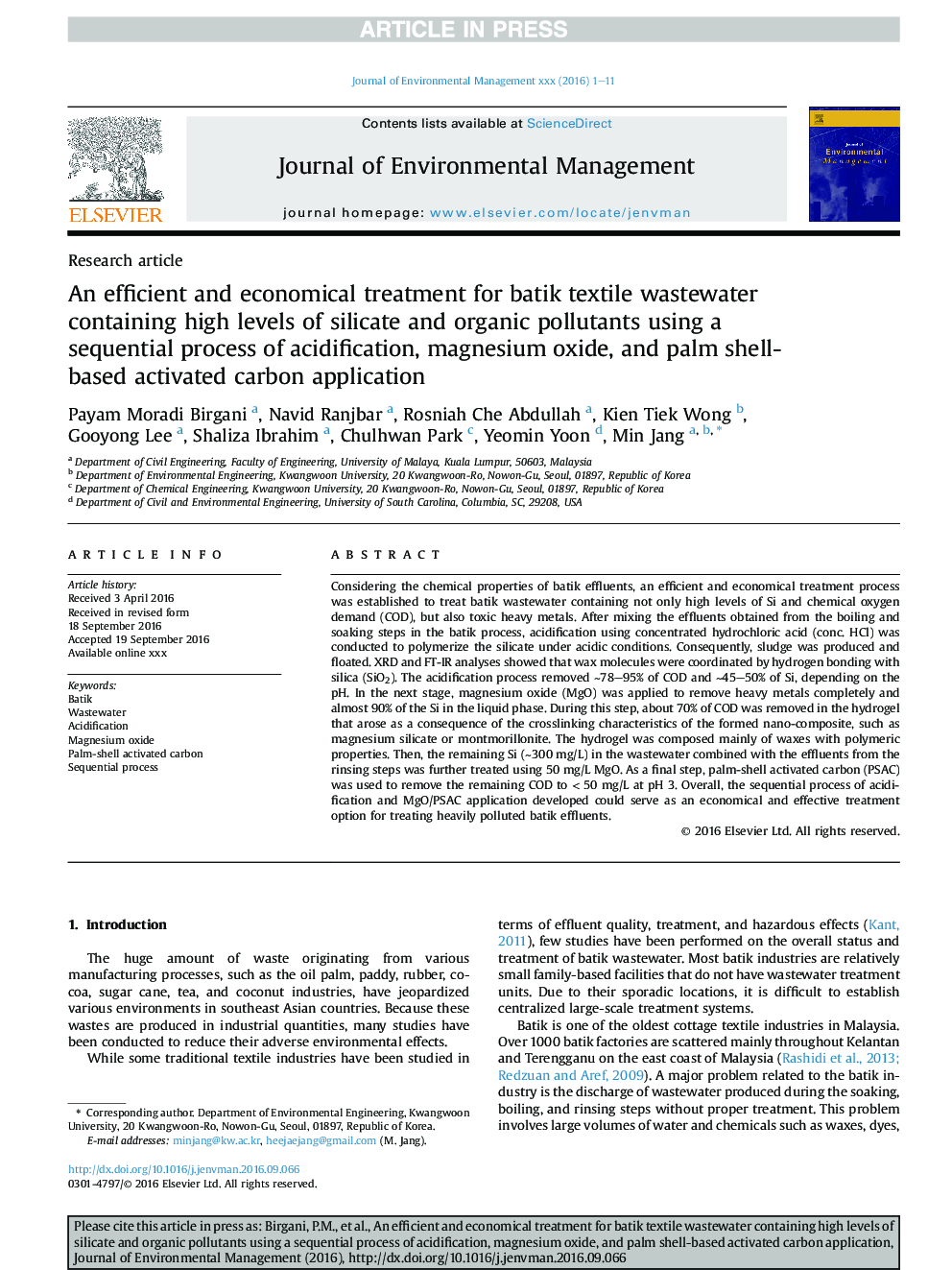| کد مقاله | کد نشریه | سال انتشار | مقاله انگلیسی | نسخه تمام متن |
|---|---|---|---|---|
| 5117088 | 1378115 | 2016 | 11 صفحه PDF | دانلود رایگان |
عنوان انگلیسی مقاله ISI
An efficient and economical treatment for batik textile wastewater containing high levels of silicate and organic pollutants using a sequential process of acidification, magnesium oxide, and palm shell-based activated carbon application
ترجمه فارسی عنوان
یک کارآمد و مقرون به صرفه برای پساب های باتیک نساجی حاوی سطوح بالای آلاینده های سیلیکات و آلی با استفاده از فرآیند پیچیده اسید شدن، اکسید منیزیم و کاربرد کربن فعال کربن پالم
دانلود مقاله + سفارش ترجمه
دانلود مقاله ISI انگلیسی
رایگان برای ایرانیان
کلمات کلیدی
باتیک، فاضلاب، اسیدی شدن، اکسید منیزیم، کربن فعال پوسته پوسته، روند متوالی
موضوعات مرتبط
مهندسی و علوم پایه
مهندسی انرژی
انرژی های تجدید پذیر، توسعه پایدار و محیط زیست
چکیده انگلیسی
Considering the chemical properties of batik effluents, an efficient and economical treatment process was established to treat batik wastewater containing not only high levels of Si and chemical oxygen demand (COD), but also toxic heavy metals. After mixing the effluents obtained from the boiling and soaking steps in the batik process, acidification using concentrated hydrochloric acid (conc. HCl) was conducted to polymerize the silicate under acidic conditions. Consequently, sludge was produced and floated. XRD and FT-IR analyses showed that wax molecules were coordinated by hydrogen bonding with silica (SiO2). The acidification process removed â¼78-95% of COD and â¼45-50% of Si, depending on the pH. In the next stage, magnesium oxide (MgO) was applied to remove heavy metals completely and almost 90% of the Si in the liquid phase. During this step, about 70% of COD was removed in the hydrogel that arose as a consequence of the crosslinking characteristics of the formed nano-composite, such as magnesium silicate or montmorillonite. The hydrogel was composed mainly of waxes with polymeric properties. Then, the remaining Si (â¼300 mg/L) in the wastewater combined with the effluents from the rinsing steps was further treated using 50 mg/L MgO. As a final step, palm-shell activated carbon (PSAC) was used to remove the remaining COD to < 50 mg/L at pH 3. Overall, the sequential process of acidification and MgO/PSAC application developed could serve as an economical and effective treatment option for treating heavily polluted batik effluents.
ناشر
Database: Elsevier - ScienceDirect (ساینس دایرکت)
Journal: Journal of Environmental Management - Volume 184, Part 2, 15 December 2016, Pages 229-239
Journal: Journal of Environmental Management - Volume 184, Part 2, 15 December 2016, Pages 229-239
نویسندگان
Payam Moradi Birgani, Navid Ranjbar, Rosniah Che Abdullah, Kien Tiek Wong, Gooyong Lee, Shaliza Ibrahim, Chulhwan Park, Yeomin Yoon, Min Jang,
